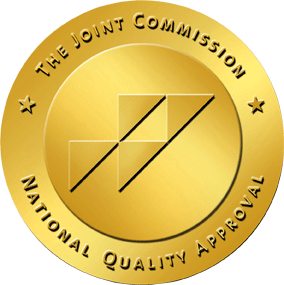Key Takeaways
- Cocaine use can cause severe damage to the nasal cavity, leading to conditions like cocaine-induced midline destructive lesions.
- Immediate and chronic exposure to cocaine can result in frequent nosebleeds, chronic congestion, and loss of sense of smell.
- Cocaine’s vasoconstrictive properties reduce blood flow and oxygen supply to nasal tissues, causing various complications.
- Long-term cocaine use can lead to structural damage, such as septal perforation and nasal collapse.
- Cocaine-induced nosebleeds (epistaxis) are common and can vary in frequency and severity based on usage patterns.
- Medical complications from cocaine-induced nosebleeds can be significant, including ischemic complications and granulomatosis with polyangiitis.
- Preventing cocaine-induced nosebleeds requires abstinence from cocaine use and may involve medical and surgical interventions.
- Comprehensive health risks associated with cocaine use extend beyond nosebleeds, affecting cardiovascular, respiratory, renal, and mental health.
- Addressing cocaine addiction is crucial for preventing nosebleeds and requires a multidisciplinary approach to treatment.
- Preventive strategies include substance abuse education, professional help, support networks, and healthy lifestyle choices.
Nasal Structure and Risk of Cocaine Damage
The nasal cavity is a key component of the respiratory system. Unfortunately, it is highly susceptible to damage from cocaine use.
The interior of the nose is lined with a delicate membrane called the nasal mucosa, which is rich in blood vessels. These vessels are responsible for warming and humidifying the air we breathe. However, when cocaine is snorted, it constricts these blood vessels, reducing blood flow and oxygen supply to the tissue. This can lead to a condition known as cocaine-induced midline destructive lesion.
Cocaine-induced midline destructive lesion is characterized by severe damage to the nasal septum and surrounding tissues. It often presents with symptoms like frequent nosebleeds, chronic congestion, and loss of sense of smell.
The damage is not limited to the soft tissues. In fact, it can extend to the cartilage and bone, leading to long-term structural damage such as septal perforation and even collapse of the nasal structure. The destructive effect of cocaine, coupled with its potential to be mixed with other harmful substances, increases the risk of tissue death and subsequent nasal deformities.
Recovery Can Be Life Changing
Whether you or a loved one is struggling with addiction, our expert team is here to guide you every step of the way. Don’t wait— reach out today to take the first step toward taking control of your life.
“My life has became something that I’m proud of and something I can be grateful for.“
– Joseph McDermott, The Recovery Village Cherry Hill Alumni
Immediate effects of cocaine use include injury to the nasal lining, which can occur from the first instance of use. Chronic exposure can lead to more severe complications, including:
- Persistent nasal blocking or discharge (chronic rhinitis)
- Sinus inflammation (sinusitis)
- Damage to the face (orofacial damage)
The diagnosis of cocaine-induced midline destructive lesion often requires a multidisciplinary approach involving clinical and radiological assessment to manage the extensive damage effectively.
Ultimately, the most crucial step in preventing further nasal damage is stopping cocaine use. This highlights the need for comprehensive addiction treatment.
Effects of Cocaine on Nasal Mucosa and Blood Vessels
The nasal mucosa is a crucial structure within the nose. It is responsible for:
- Moistening and cleaning the air we breathe
- Producing mucus for lubrication
- Housing cells that contribute to our sense of smell
Directly beneath the mucosa lie blood vessels that supply the nose with essential nutrients. Cocaine’s vasoconstrictive properties can significantly affect these nasal components. When cocaine is snorted, it leads to the narrowing of blood vessels in the nasal tissues, which reduces blood flow and can cause damage.
Chronic use of cocaine can cause irritation and atrophy of the nasal mucosa. Over time, the decreased blood flow and nutrient delivery can lead to tissue death, potentially resulting in septal perforation. The intense vasoconstriction induced by cocaine can also contribute to long-term complications. For example, it can cause the formation of large mucus-filled cysts called giant mucoceles.
Additionally, the drug’s impact on vascular health is multifaceted. It involves hypertension, thrombosis, and alterations in blood flow. Interestingly, this could lead to early detection of vascular disease in individuals with cocaine addiction.
Understanding the effects of cocaine on these nasal structures is essential for comprehending the full scope of risks associated with cocaine use, including the potential for acute and chronic health issues. Research highlights the importance of multimodality imaging for early detection of vascular diseases in cocaine users, underscoring the need for awareness and preventive measures.
Cocaine’s Harmful Effects on Nasal Tissues
The use of cocaine can have devastating effects on the nasal tissues, primarily due to its vasoconstrictive properties. Cocaine causes the blood vessels in the nasal passages to constrict, which reduces blood flow and oxygen supply to the tissue. This can lead to a condition known as cocaine-induced midline destructive lesion. Also known as “cocaine nose,” this condition is characterized by severe damage to the nasal septum and surrounding tissues.
Immediate injury to the nasal tissues can occur from the first use of cocaine. Over time, the drug can damage deeper structures like cartilage and bone.
Chronic cocaine inhalation can result in symptoms such as:
- Frequent nosebleeds
- Chronic nasal congestion
- Recurrent sinus infections
- A loss of sense of smell
In severe cases, tissue death can occur, leading to the collapse of the nasal structure and permanent disfigurement.
Furthermore, cocaine’s acidic composition allows it to be absorbed into the bloodstream through the nasal mucosa. This absorption can cause immediate damage and prevent normal tissue regeneration, which can have lifelong consequences. The risk of severe nasal damage increases with chronic use.
Understanding these risks and recognizing the symptoms of cocaine-induced nasal damage is critical for prevention and timely treatment to avoid irreversible harm. Medical literature emphasizes the importance of seeking professional help to address addiction and prevent further nasal injury.
The Link Between Cocaine Use and Nosebleeds
Regular cocaine use has been associated with various nasal complications, including frequent nosebleeds. Nosebleeds are a common side effect of using cocaine.
The substance’s vasoconstrictive properties can cause the blood vessels in the nasal mucosa to constrict, leading to reduced blood flow and damage to the delicate tissues within the nose. Over time, this can result in chronic nosebleeds.
Additionally, cocaine’s corrosive effect can cause ulcerations and perforations in the nasal septum, the cartilage that divides the nasal passages. This damage can be worsened by cocaine interfering with the body’s ability to repair blood vessels, further exacerbating the risk of nosebleeds.
Remember, chronic use can lead to more severe issues such as septal perforation, serious infections, and nasal collapse, which are difficult to reverse even with medical intervention.
It is important to note that the risk of contracting and transmitting blood-borne diseases is heightened due to the damage cocaine causes to the nasal passages. This risk persists with continued use, highlighting the importance of seeking treatment to prevent further harm.
The only definitive way to prevent the progression of damage is to abstain from cocaine use and seek professional help for substance use issues.
The Physiological Process Behind Cocaine-Induced Nosebleeds
The nasal cavity, rich in blood vessels and lined with delicate mucosa, is highly susceptible to the effects of cocaine.
When cocaine is snorted, it causes the blood vessels in the nose to constrict. In turn, this reduces blood flow and oxygen delivery to the nasal tissues. This vasoconstriction, coupled with cocaine’s damaging impact on the cells that line the blood vessels, can lead to inflammation, ulceration, and eventual breakdown of the nasal mucosa.
Over time, repeated cocaine use worsens this damage. It weakens the structural integrity of the nasal blood vessels. This weakening increases the risk of bleeding, leading to frequent nosebleeds. The compromised blood vessels may break with minor trauma or even spontaneously, resulting in nosebleeds that can range from mild to severe.
Additionally, cocaine’s interference with normal cellular function and its promotion of inflammation and tissue death contribute to the deterioration of the nasal structures. This can culminate in not only nosebleeds but also long-term damage to the nasal cavity and septum.
The neurovascular effects of cocaine, such as decreased cerebral blood flow and altered synaptic plasticity, further underscore the extensive impact of this drug on both the peripheral and central nervous systems.
Understanding the mechanism of cocaine-induced nosebleeds is crucial for medical professionals to provide effective treatment and for users to recognize the serious risks associated with cocaine use.
The Frequency and Severity of Cocaine-Induced Nosebleeds
The frequency and severity of nosebleeds in individuals who use cocaine can vary based on several factors, including the method and frequency of cocaine use.
While studies show that nosebleeds are a common problem, cocaine users are at a higher risk for more frequent and severe episodes.
Treatment for cocaine-induced nosebleeds typically requires cessation of use. However, in some cases, it may involve surgical intervention to repair the damage caused by the drug.
Potential Medical Complications from Cocaine-Induced Nosebleeds
Cocaine-induced nosebleeds are often considered a minor side effect of drug use. However, they can lead to significant medical complications.
Chronic cocaine use can cause severe damage to the nasal passages and structures, leading to conditions such as cocaine-induced midline destructive lesions. In extreme cases, the toxicity and reduced blood flow can cause necrosis of nasal tissues, leading to septal perforation and even complete midface necrosis.
Addressing these complications requires a multifaceted approach, including stopping cocaine use, medical treatments, surgical intervention, and psychological support to help patients achieve sobriety. Recognizing the symptoms and seeking timely treatment is crucial to prevent irreversible damage and improve the chances of recovery.
Long-Term Effects of Cocaine on Nasal Cavity Health
Chronic cocaine use has been linked to severe and sometimes irreversible damage to the nasal cavity.
The substance’s potent vasoconstrictive properties can lead to tissue death. Over time, this can cause the destruction of the structures of the nasal cavity. Individuals may have nasal septum perforations, nasal wall destruction, and even hard palate damage.
Medical reports have highlighted cases where patients face the risk of losing their noses entirely due to the extensive damage caused by cocaine insufflation.
Cocaine’s destructive changes are not only cosmetic but can also result in functional impairments. For example, people may have difficulties in breathing and speaking.
Medical interventions often start with conservative approaches, including cessation of cocaine use and saline nasal irrigation. Nevertheless, they may progress to surgical management when necessary to address the significant structural damage.
Health Risks Associated with Cocaine Use Beyond Nosebleeds
Cocaine-induced nosebleeds are a commonly known consequence of cocaine use. However, there are numerous other health risks that can be equally or more severe.
Chronic cocaine use can lead to a condition known as cocaine-induced midline destructive lesion. In other words, it severely damages the nasal septum and surrounding tissues. This can result in symptoms such as chronic nasal congestion, recurrent sinus infections, and loss of sense of smell. Moreover, the constriction and rupture of blood vessels caused by cocaine can reduce blood flow, leading to tissue death and potentially the destruction of the nose altogether.
Aside from nasal complications, cocaine use poses significant cardiovascular risks. It can cause acute increases in blood pressure, abnormal heart rhythms, and an elevated risk of heart attacks, strokes, and even sudden death.
Respiratory issues are also prevalent among users, particularly those who smoke cocaine. When combined with tobacco, this can increase the risk of lung cancer.
Cocaine’s vasoconstrictive properties can also lead to renal failure as a result of heightened blood pressure or blood supply obstruction to the kidneys.
Furthermore, cocaine use can have detrimental effects on mental health. This includes the potential for developing co-occurring disorders such as anxiety and depression. Cognitive impairments and alterations in the brain’s reward pathways can persist even after abstinence from the drug.
The risk of infectious disease transmission is also heightened due to impaired judgment and decision-making while under the influence.
Therefore, the health risks associated with cocaine use extend far beyond nosebleeds, affecting multiple bodily systems and overall well-being.
Managing and Preventing Cocaine-Induced Nosebleeds
Cocaine-induced nosebleeds are a common and concerning consequence of cocaine use. Treatment for this condition begins with stopping cocaine use. This is key, as it allows for the healing of nasal tissues. Subsequent management may involve various strategies, depending on the severity of the nosebleeds and the extent of nasal damage.
Initial treatment approaches for active nosebleeds include:
- Direct pressure application to the septal area
- Use of vasoconstrictors
- Nasal packing
In more severe cases, nasal cautery or surgical intervention may be necessary.
A multidisciplinary approach involving primary care physicians, emergency physicians, and otorhinolaryngologists is recommended for structured care. For those with cocaine-induced midline destructive lesions, maxillofacial surgeons and dental professionals may be involved for surgical reconstruction or prosthetic rehabilitation.
Prevention of cocaine-induced nosebleeds involves lifestyle changes, most notably abstinence from cocaine. Support through addiction treatment programs can be crucial for individuals struggling with substance use. Additionally, educating users about the risks associated with cocaine inhalation and promoting awareness of the importance of seeking medical help early can prevent the progression of damage.
It is essential to address the underlying addiction to achieve long-term success in treating and preventing cocaine-induced nosebleeds. Comprehensive addiction treatment programs, such as those offered by The Recovery Village, can provide the necessary support and resources for recovery.
Addressing Cocaine-Induced Nosebleeds: Medical Interventions
Cocaine-induced nosebleeds can be addressed through several medical interventions.
Initially, stopping cocaine use is key to halt further damage to the nasal tissues. Medical detoxification may be necessary as the first step in recovery and to ensure safe withdrawal. The damage caused by cocaine may require surgical intervention to repair the nasal structure and restore function.
For immediate relief from acute nosebleeds, conservative measures such as applying pressure, using nasal decongestant sprays, and maintaining a humid environment can be effective. In cases where blood-borne diseases are a concern due to damaged nasal tissues, medical professionals may prescribe appropriate treatments.
Furthermore, a multidisciplinary approach involving ENT specialists, maxillofacial surgeons, dental professionals, and psychologists is crucial for comprehensive care. This team works together to manage the physical damage, such as providing prosthetic rehabilitation for palatal perforations and addressing the psychological aspect of addiction to facilitate cessation of cocaine use.
It is essential to recognize that while these treatments address the physical consequences of cocaine use, long-term recovery and prevention of future nosebleeds also depend on overcoming the addiction itself, often requiring support from rehabilitation centers and counseling services.
Preventing Cocaine-Induced Nosebleeds
Preventing cocaine-induced nosebleeds involves addressing the root cause: cocaine use itself. Adopting a comprehensive approach that encompasses lifestyle changes and preventive strategies can significantly reduce the risk of nosebleeds and other cocaine-related health issues.
Here are several recommendations:
- Avoidance of Cocaine: The most effective preventive measure is the complete avoidance of cocaine use. Individuals seeking to prevent nosebleeds should abstain from using cocaine in any form.
- Substance Abuse Education: Educating individuals about the risks and long-term effects of cocaine use, including nasal damage and potential for addiction, can deter initial use or encourage cessation.
- Professional Help: Seeking help from healthcare professionals or substance abuse counselors can provide the necessary support for overcoming cocaine addiction. Research shows that a combination of pharmacological and behavioral therapies can be effective in treating cocaine cravings and addiction.
- Support Networks: Engaging in support groups and community resources can offer social support and practical advice for individuals struggling with cocaine use.
- Risk Factor Reduction: Addressing individual, family, community, and structural risk factors for substance use can help prevent the initiation and escalation of cocaine use. The National Institute on Drug Abuse outlines various prevention programs tailored to different stages of life and settings.
- Healthy Lifestyle Choices: Adopting a healthy lifestyle with regular exercise, proper nutrition, and stress management techniques can improve overall well-being and reduce the likelihood of turning to substances like cocaine for relief.
It’s important to note that each individual’s journey toward recovery and prevention is unique, and a tailored approach that considers personal circumstances and health is essential.
Recovering from Cocaine Addiction
If you’re seeking addiction treatment for yourself or a loved one, The Recovery Village Cherry Hill at Cooper is here to help. Our facility is conveniently located within the heart of New Jersey, under 20 minutes from Philadelphia. We have a full range of treatment options, including medical detox, inpatient care, partial hospitalization programming and intensive outpatient services. We offer a state-of-the-art inpatient facility and have specialized options for trauma, including EMDR and a specialty track for veterans and first responders.
The Recovery Village
If you or a loved one are ready to begin the journey toward a substance-free life, we’re standing by to take your call. Reach out to our Recovery Advocates to learn more about our treatment programs and find a plan that works well for your specific needs and situation.









